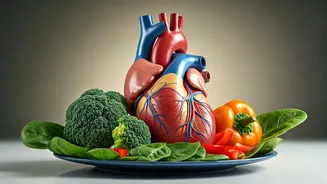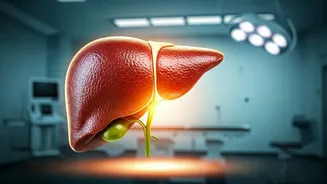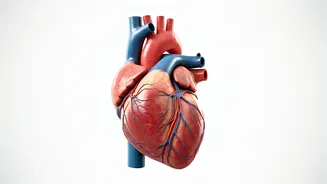Understanding Cholesterol
Cholesterol, a fatty substance in the blood, is a crucial element for cell function. However, high levels can increase the risk of heart disease. It comes
in two primary forms: LDL (low-density lipoprotein), often termed "bad" cholesterol, and HDL (high-density lipoprotein), considered "good" cholesterol. LDL cholesterol can accumulate in arteries, forming plaque and obstructing blood flow, a condition known as atherosclerosis. HDL, on the other hand, helps remove LDL cholesterol from the arteries, reducing the risk of heart disease. Maintaining a healthy balance of these cholesterol types is essential for cardiovascular health.
Fiber-Rich Foods
Incorporating fiber-rich foods into your diet is a powerful strategy for lowering cholesterol. Soluble fiber, found in oats, beans, apples, and pears, binds with cholesterol in the digestive system, preventing its absorption into the bloodstream. This process helps to reduce overall LDL cholesterol levels. A daily intake of at least 5-10 grams of soluble fiber can significantly contribute to improved cholesterol profiles. Consider starting your day with oatmeal, adding beans to your salads, or snacking on fruits like apples and pears to boost your fiber intake and support heart health.
Healthy Fats for Hearts
Not all fats are created equal; choosing the right ones can positively impact cholesterol levels. Unsaturated fats, including monounsaturated and polyunsaturated fats, are beneficial for heart health. Monounsaturated fats, abundant in olive oil, avocados, and nuts, can help reduce LDL cholesterol. Polyunsaturated fats, such as omega-3 fatty acids found in fatty fish like salmon, and walnuts, provide additional benefits, including reducing triglycerides. Aim to replace saturated and trans fats with unsaturated fats in your diet. This shift can contribute to healthier cholesterol levels and lower the risk of heart disease.
Plant Sterols & Stanols
Plant sterols and stanols are naturally occurring substances found in plants that have a remarkable ability to lower cholesterol. They function similarly to soluble fiber by blocking the absorption of cholesterol in the small intestine. Many food products, such as yogurt, orange juice, and spreads, are fortified with plant sterols or stanols. Consuming 2 grams of plant sterols or stanols per day can reduce LDL cholesterol by up to 10%. Integrating these fortified foods into your diet, alongside other heart-healthy strategies, can be an effective way to manage cholesterol levels.
Limiting Saturated Fats
Saturated fats, mainly found in red meat, processed foods, and full-fat dairy products, can raise LDL cholesterol levels. Reducing your intake of saturated fats is a crucial step in managing cholesterol. The American Heart Association recommends limiting saturated fat intake to no more than 6% of your daily calories. This translates to about 13 grams of saturated fat for a 2,000-calorie diet. Opt for lean meats, poultry without skin, and low-fat dairy products. Reading food labels to check for saturated fat content and making conscious choices can significantly improve your cholesterol levels and overall heart health.
The Role of Exercise
Regular physical activity plays a vital role in managing cholesterol levels and promoting heart health. Exercise can help increase HDL (good) cholesterol and reduce LDL (bad) cholesterol. Aim for at least 150 minutes of moderate-intensity aerobic exercise or 75 minutes of vigorous-intensity exercise per week. Activities like brisk walking, jogging, cycling, and swimming are effective ways to improve your cholesterol profile. Incorporating strength training exercises a couple of times a week can also boost your overall health. Find activities you enjoy to make exercise a sustainable part of your lifestyle.
Dietary Tips & Tricks
Making small, consistent changes to your diet can make a big difference in lowering cholesterol. Start by incorporating more fruits, vegetables, and whole grains into your meals. Choose lean protein sources, such as fish and poultry, and limit your intake of red meat and processed foods. Use olive oil instead of butter or other saturated fats for cooking and dressings. Read food labels carefully to monitor saturated and trans-fat content. Consider planning your meals in advance and preparing your own meals at home to control your ingredients and portion sizes. These dietary adjustments, combined with exercise, contribute to lower cholesterol levels.











